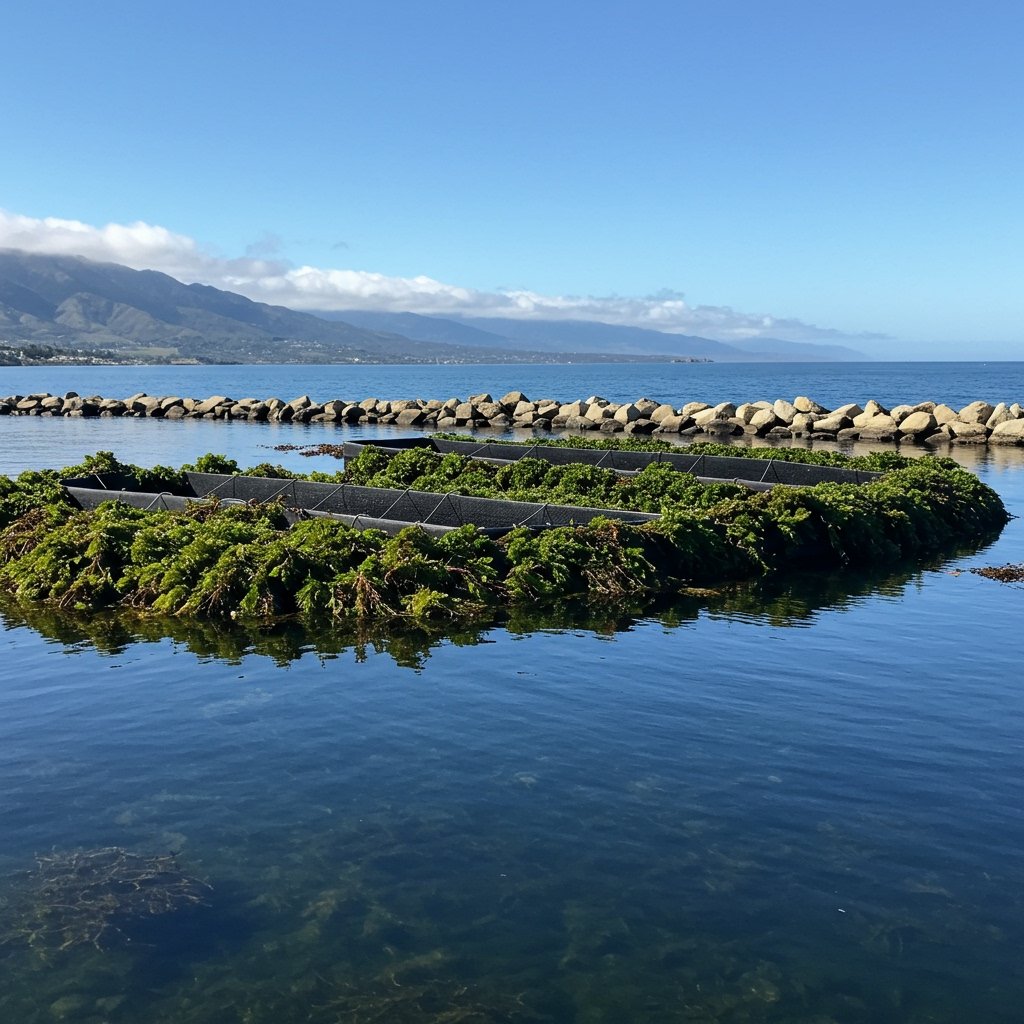California Boosts Blue Economy with $50 Million for Sustainable Aquaculture and Kelp Farming
The California Department of Food and Agriculture (CDFA) has announced a significant investment in the state’s coastal future, unveiling a new $50 million grant program designed to catalyze the expansion of sustainable aquaculture and kelp farming. This initiative, formally known as the “California Coastal Ecosystems & Aquaculture Fund,” represents a strategic commitment to fostering economic growth, enhancing ecological health, and creating green jobs across California’s diverse coastline, spanning from Humboldt County in the north down to San Diego in the south.
The program’s core objective is to support projects that not only advance the commercial viability of sustainable farming practices in aquatic environments but also deliver measurable environmental benefits. These benefits are expected to include enhanced carbon sequestration, improved water quality, and the creation of valuable marine habitat, aligning aquaculture development with critical climate resilience goals. By supporting both established operators and innovative research projects, the fund aims to build a robust, environmentally responsible aquaculture sector capable of contributing significantly to the state’s economy and food security without the ecological footprint often associated with traditional fishing or less sustainable farming methods. The CDFA’s leadership in this area signals a strong governmental push to integrate marine resource development with conservation outcomes.
Strategic Investment in Coastal Resilience and Growth
California’s long and varied coastline is home to vibrant communities and delicate ecosystems that are increasingly vulnerable to the impacts of climate change, including rising sea levels, changing ocean temperatures, and ocean acidification. The state recognizes the potential of sustainable aquaculture, particularly kelp farming, as a powerful tool in addressing several key challenges. Kelp, a type of seaweed, is a highly efficient absorber of carbon dioxide, playing a crucial role in mitigating ocean acidification locally and contributing to broader carbon sequestration efforts. Furthermore, properly managed aquaculture can reduce pressure on wild fish stocks, provide valuable ecosystem services such as nutrient cycling and water filtration, and offer habitats for various marine species. Farming practices focused on native species and integrated multi-trophic aquaculture (IMTA), which cultivates multiple species that occupy different levels of the food chain to mimic natural ecosystems and minimize waste, are particularly encouraged for their potential ecological benefits.
The California Coastal Ecosystems & Aquaculture Fund will provide competitive grants to eligible entities throughout this extensive coastal stretch, from the cold waters of Humboldt County to the warmer southern regions near San Diego. This broad geographic scope acknowledges the unique ecological conditions, community needs, and economic opportunities present along different parts of the coast, encouraging the development of locally tailored and environmentally appropriate solutions. The $50 million allocated to the fund underscores the state’s serious commitment to scaling these industries responsibly and supporting the transition towards a more sustainable ‘blue economy’. The investment is anticipated to stimulate innovation in farming techniques, processing, and market development.
Program Details and Timeline
Prospective applicants should note the critical dates associated with this transformative program. The CDFA has announced that applications for the “California Coastal Ecosystems & Aquaculture Fund” will officially open on March 1, 2025. This timeline provides potential applicants – including existing farms, aspiring entrepreneurs, research institutions, non-profit organizations focused on coastal conservation or economic development, and tribal entities – ample time to develop comprehensive proposals that meet the fund’s objectives and criteria.
Following the application period, a rigorous and competitive review process will evaluate submissions based on their potential to deliver significant economic benefits, measurable environmental improvements, and positive community impacts. The CDFA aims for the first round of funding disbursements to occur by July 2025. This relatively rapid turnaround from application opening to funding allocation highlights the state’s intent to accelerate the growth of this nascent but promising sector and quickly put resources into projects that can demonstrate tangible progress. The competitive nature of the grants ensures that only the most promising and impactful projects receive funding, maximizing the return on the state’s investment.
Prioritizing Environmental Benefits and Community Engagement
A cornerstone of the “California Coastal Ecosystems & Aquaculture Fund” is its explicit prioritization of projects demonstrating clear environmental benefits and robust community engagement. Proposals will likely be evaluated critically on their potential to enhance carbon sequestration, restore or improve marine habitats, reduce nutrient pollution, contribute to local biodiversity, and mitigate the effects of ocean acidification. Projects that integrate with existing coastal industries, such as commercial and recreational fisheries, or provide meaningful training and employment opportunities for local residents, particularly in historically underserved communities, are also expected to receive favorable consideration. Creating green jobs is a key outcome sought by the fund, encompassing roles from hatchery technicians and farm managers to processing workers, research scientists, equipment maintenance specialists, and environmental monitoring personnel.
The emphasis on community engagement reflects a commitment to ensuring that the expansion of aquaculture benefits coastal populations and is developed in a manner that is transparent, equitable, and inclusive. This approach aims to build local support, address potential concerns proactively through dialogue and collaboration, and integrate traditional ecological knowledge where applicable. By supporting projects that are not only economically viable but also environmentally sound and socially responsible, California seeks to build a sustainable aquaculture industry that serves as a model for coastal development globally. The fund encourages innovative approaches, rigorous scientific research into best practices, and pilot projects that can demonstrate scalability and long-term sustainability in diverse coastal environments. Funding for research projects is crucial to advancing the scientific understanding of how different aquaculture methods interact with California’s specific ecosystems and to developing the most environmentally benign and productive techniques.
Building a Sustainable Future for California’s Coast
The establishment of the “California Coastal Ecosystems & Aquaculture Fund” signifies a pivotal moment for the state’s blue economy and its comprehensive efforts to combat climate change. By investing $50 million into sustainable aquaculture and kelp farming, California is taking a proactive and substantial step towards diversifying its food production systems, creating resilient coastal economies, and harnessing the natural power of marine ecosystems for carbon capture and environmental restoration. This significant funding is poised to unlock innovation, create a new wave of green jobs, and support businesses and research initiatives that are directly aligned with the state’s ambitious environmental values and economic development goals.
The program’s focus on eligible farms and research projects indicates a strategic approach to support both the practical, commercial implementation of sustainable practices and the essential scientific understanding and innovation necessary for their responsible, long-term success. As the application window approaches on March 1, 2025, and the first funding round is anticipated by July 2025, coastal communities, entrepreneurs, researchers, and organizations across California, spanning the entire range from Humboldt County to San Diego, are strongly encouraged to prepare their proposals for this transformative opportunity. The “California Coastal Ecosystems & Aquaculture Fund” is set to play a crucial role in shaping a sustainable and prosperous future for California’s iconic coast, demonstrating how economic development and environmental stewardship can go hand in hand in the marine environment.



















